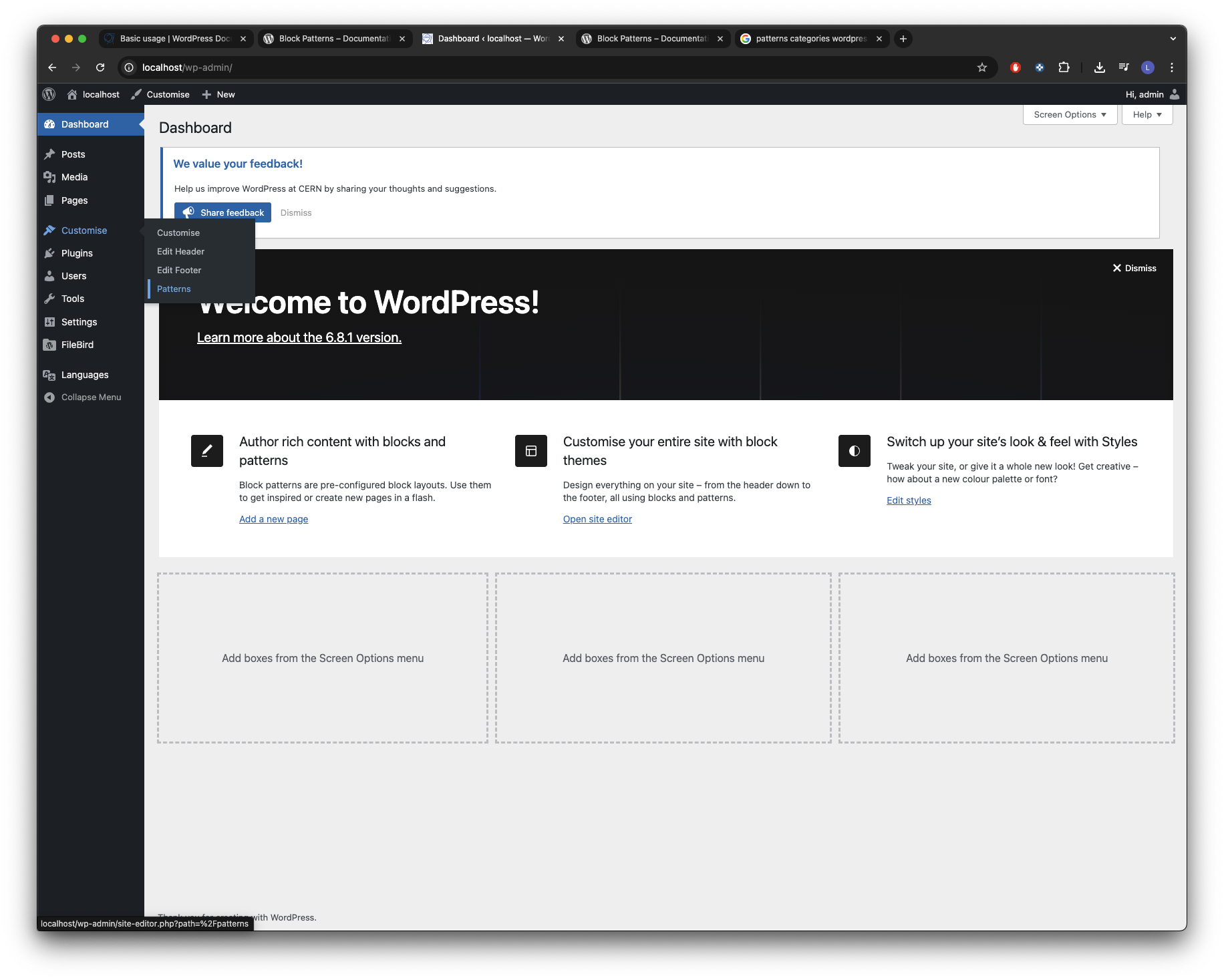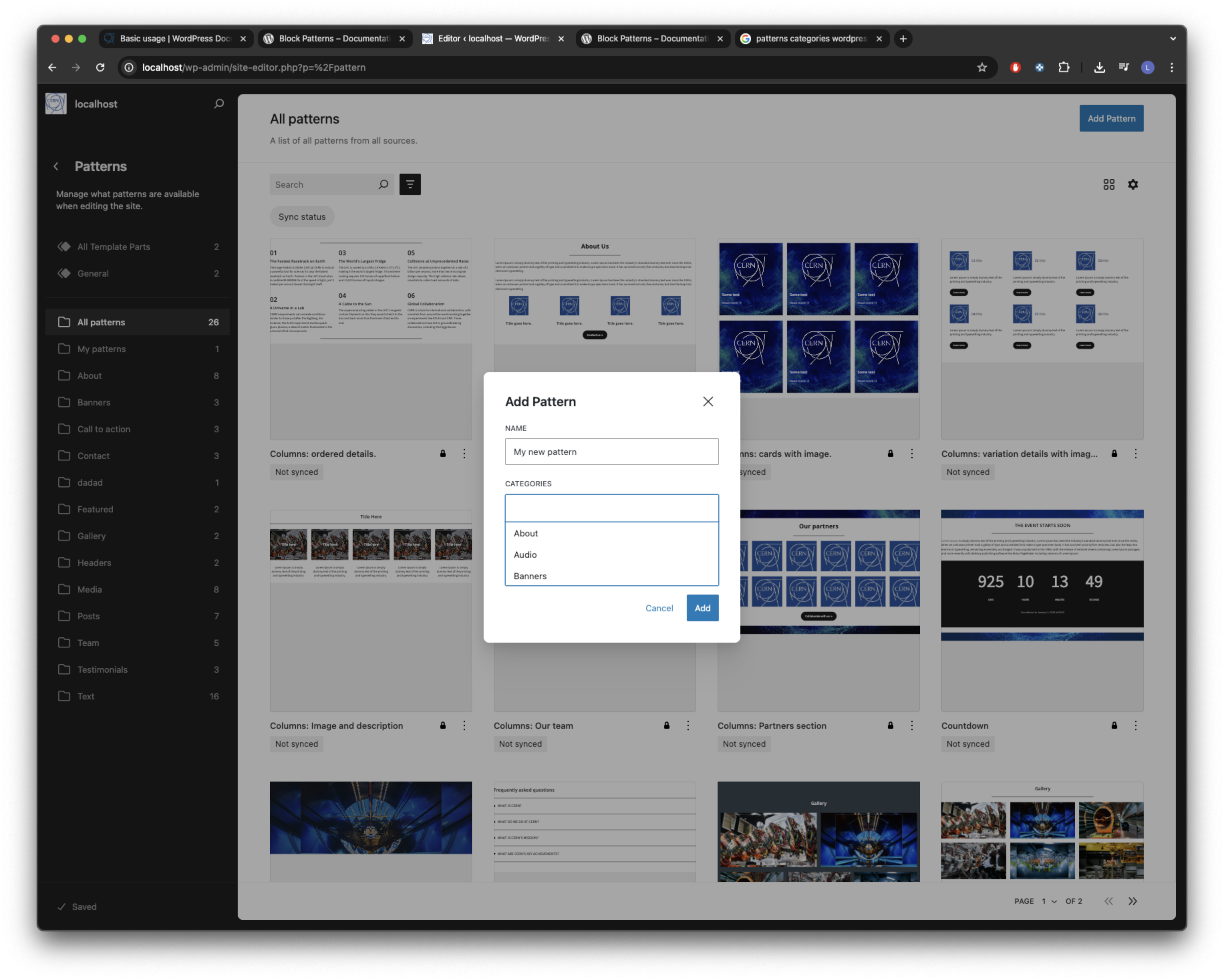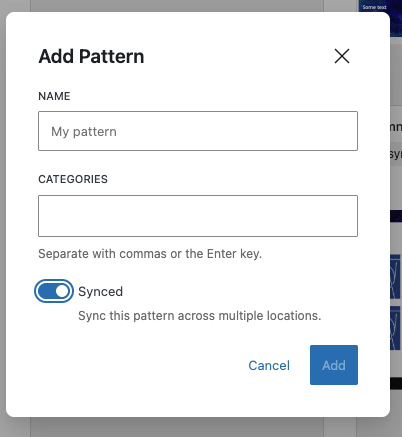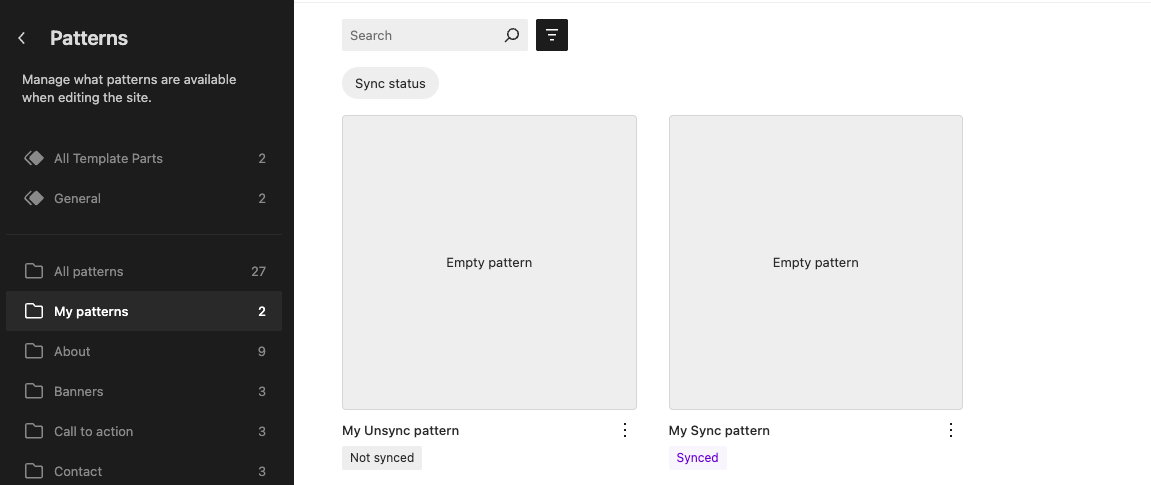Selecting Patterns
WordPress block patterns, or just patterns, are pre-designed collections of blocks that serve as building blocks for creating professional-looking pages and posts quickly and consistently. These reusable templates combine multiple WordPress blocks—such as headings, images, buttons, and columns—into cohesive layouts that you can insert with a single click. Patterns are particularly valuable because they eliminate the need to recreate common design elements from scratch, ensure visual consistency across your website, and provide inspiration for new layouts while maintaining your site's overall design standards.
Adding a Pattern
- Click the
+icon under the current block - Click on the
Patternstab orSynced Patternstab - Use the dropdown menu to select which category of patterns you want to use, or click
Exploreto open a modal that allows you to have a larger view of each pattern - Click the pattern you wish to insert, or drag and drop the pattern into your content.
If you click on the pattern, it will be inserted at the location of your cursor.
Creating a Pattern
1. Navigate to Patterns
- Go to the Dashboard of WordPress
- Click on
Customisein the left menu, selectPatterns

2. Create pattern
- Click on the
Add Patternbutton - Give to your pattern a human-readable name in order to be able to find it later
- Use the dropdown to choose in which category your pattern fits better. Do not choose more than three categories
- Depending on how you intend to use your new pattern, you may prefer a synced or unsynced pattern
Jump to different types of patterns to understand the difference.

Editing a Pattern
1. Navigate to My Patterns
- Go to the Dashboard of WordPress
- Click on
Customisein the left menu, then selectPatterns - In the editor, go to
My Patternsto see your custom patterns
2. Edit the pattern
Simply click the pattern that you wish to edit.
Different Types of Patterns
When you create a Pattern you will see a Synced toggle that can be activated/deactivated.

Synced Pattern
A synced pattern in WordPress is a reusable group of blocks that always stays the same across your entire site. When you edit a synced pattern in one place, those changes automatically update everywhere that pattern is used. Users familiar with Views in Drupal will find this functionality very similar. Indeed, this is ideal for content you want to keep consistent, like banners, or call-to-action sections.

In the editor, synced patterns are visually marked with a purple highlight and a label, to distinguish them from unsynced patterns.
In order to edit a synced pattern, you must change the pattern itself, not just one instance of it.
Example:
If you use a synced pattern for your contact information and later update your phone number, the new number will appear everywhere you used that pattern on your site.
Unsynced Pattern
An unsynced pattern is a template or layout you can insert multiple times, but each instance is independent. After you add an unsynced pattern to a page or post, you can edit its content freely—changes will only apply to that single instance. Other places where you used the same unsynced pattern will not be affected. This is useful for layouts you want to reuse but customise each time, such as blog post intros or unique banners for different pages.
Example:
You create an unsynced pattern for a two-column layout with an image and text. You can add this pattern to several pages and then change the image or text on each page without affecting the others.
Summary
| Pattern Type | Edits Affect All Instances? | Best For | Editing Location |
|---|---|---|---|
| Synced Pattern | Yes | Consistent, reusable content | Pattern management screen |
| Unsynced Pattern | No | Layouts you want to customize per use | Directly in page/post |
In short:
- Synced pattern: Edit once, updates everywhere
- Unsynced pattern: Edit each instance separately; changes are local only
External Resources
If you wish to know more about WordPress patterns, please visit the Official WordPress documentation!.